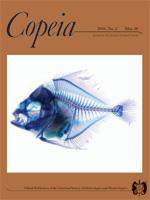Loricaria birindellii, new species, is described based on two specimens from the Rio Curuá, a tributary of the Rio Iriri in the lower Xingu basin of Brazil. In adults the new species is distinguished from all other congeners by having a combination of an elongate dorsal-fin spine (36.0% SL, based on the holotype vs. 16–29%, usually less than 26% SL) that is supported throughout most of its length by the first branched ray, and an inconspicuous (vs. prominent) post-orbital notch with minimum orbital diameter 95.4–97.2% (vs. 71.8–91.5%) of maximum orbital diameter. It is further distinguished from similar and geographically proximate species, L. lata and L. simillima, by having a more slender body, particularly head width (13.9–14.9% SL vs. 15.2–19.4% SL in L. simillima and 16.4–20.1% SL in L. lata). The larger specimen of L. birindellii exhibits male breeding characteristics known in other species of Loricaria, including expanded membranous portions of the lower lip, an increase in development of globular papillae on lip surfaces, rounded premaxillary- and dentary-tooth cusps, and slight thickening of the pectoral spine. The smaller specimen of L. birindellii exhibits a different caudal fin pigment pattern and lacks an elongate dorsal spine, suggesting that the species either undergoes ontogenetic transformation or exhibits sexual dimorphism in these characters. Two juvenile specimens (95.6 and 98.0 mm SL) from the Rio das Mortes (Araguaia-Tocantins basin) are tentatively regarded as L. aff. birindellii, based on shared morphological characters and geographic proximity.
How to translate text using browser tools
20 May 2010
A New Species of Whiptail Catfish, Genus Loricaria (Siluriformes: Loricariidae), from the Rio Curuá (Xingu Basin), Brazil
Matthew R. Thomas,
Mark H. Sabaj Pérez
ACCESS THE FULL ARTICLE





